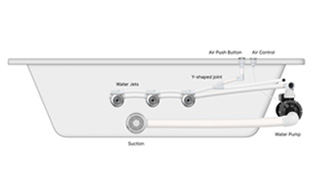Shower Support Bars: Types, Functions, and B2B Selection Guide
What Is a Shower Support Bar?
Main Components of a Shower Support Bar

Types of Shower Support Bars
| Type | Key Features | Recommended Applications |
| Glass-to-Wall Support Bar | One end fixed to the wall, the other clamped to the glass; easy to install, provides strong structural stability. | Ideal for L-shaped, corner, or single-panel shower enclosures. Most commonly used in commercial projects. |
| Glass-to-Glass Support Bar | Connects two glass panels directly without relying on the wall; creates a seamless look for frameless shower doors. | Best for large glass partitions and frameless shower rooms. |
Glass-to-Ceiling Support Bar | Mounted from ceiling to glass; transfers load to the top structure when wall strength is insufficient. | Suitable for open-concept bathrooms or lightweight partition walls. |



| Type | Key Features | Recommended Applications |
| Straight Bar | Linear load-bearing; the most common form with simple installation. | For single glass doors or lightweight fixed glass panels. |
| Angled Bar | Installed at an angle to enhance lateral support and reduce door wobble. | Recommended for glass doors with higher lateral stress. |
T-Bar Support | Main bar plus crossbar; stabilizes two glass panels at the corner. | Perfect for frameless shower corners and heavy-duty glass intersections. |
L-Bar Support | L-shaped structure for vertical glass-to-glass connections. | For frameless corner showers requiring dual-direction support. |




| Type | Key Features | Recommended Applications |
| Fixed-Length Bar | Non-adjustable length; offers maximum rigidity and cost efficiency. | Best for standard-size, mass production, or prefabricated projects. |
| Adjustable Bar | Equipped with telescopic or sliding mechanism; allows on-site fine-tuning. | Ideal for non-standard projects or renovations with measurement tolerance. |





























